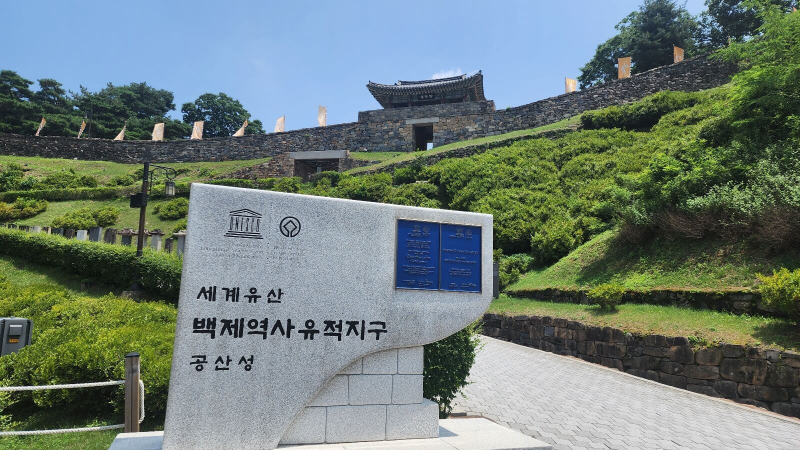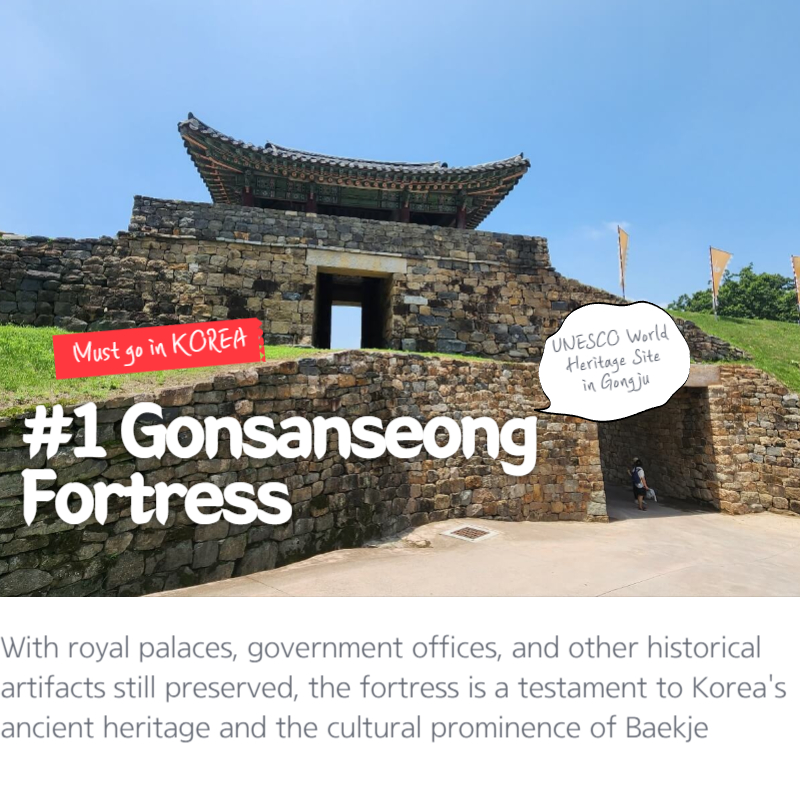Welcome to Gongsanseong Fortress, the historical heart of Gongju City, South Korea. Gongju was the vibrant second capital of the Baekje Kingdom from AD 475 to 538, serving as a thriving cultural center during the kingdom's 700-year reign. Today, we invite you to explore the rich history and legacy of this UNESCO World Heritage Site, where the past and present converge.

The Historic Significance of Gongsanseong Fortress
Originally known as Ungjinseong, the Gongsanseong Fortress served as the royal palace of the Baekje Kingdom for 64 years during the Ungjin Period. Its strategic position was integral not only to Baekje but also to the subsequent Goryeo and Joseon dynasties. With royal palaces, government offices, and other historical artifacts still preserved, the fortress is a testament to Korea's ancient heritage and the cultural prominence of Baekje. In July 2015, UNESCO recognized Gongsanseong Fortress as a World Heritage Site as part of the Baekje Historic Areas. Today, it stands as a treasured cultural inheritance, offering both local residents and international visitors a unique glimpse into Korea's past.

Monuments at Geumseoru Gate Pavilion
Your journey begins at the Geumseoru Gate Pavilion, where you'll discover a collection of 47 stone steles dedicated to various figures connected with Gongju. These stone monuments, originally scattered across the city, have now been assembled at this location, each one commemorating the exploits of notable provincial governors and officials who served in Gongju.

Gongsanseong Fortress: A Historical Masterpiece
Delve deeper into the past as you explore the fortress itself. Gongju Gongsanseong is a fortified capital established in 475 AD, when the royal capital of Baekje moved from Hanseong (present-day Seoul) to Ungin (present-day Gongju). Situated strategically on the ridges and valleys of Gongsan Mountain, beside the Geumgang River, the fortress walls stretch over 2,660 meters, enclosing various archaeological sites. These include the Imnyugak Pavilion, a pond, presumed royal palace buildings, and the four gates—Geumseoru, Jinnamnu, Gongbungnu, and Yeongdongnu. Discover the Ssangsujeong Pavilion, the Monument to Three Ming Generals, Yeongeunsa Temple, and Manharu Pavilion.
Unfolding the Stories of the Gongsanseong Fortress Flags
Immerse yourself in ancient symbolism and lore as you observe the flags placed at the cardinal points of the fortress. These flags re-enact the Sasindo mural painting of the Four Guardian Gods found in Tomb No. 6, Songsan-ri, signifying creatures that represent the four cardinal directions that maintain the universe's law and prevent misfortune. The flags are colored yellow, the national color of Baekje, signifying the universe's center. Each flag's edge carries colors symbolic of the four deities—the blue dragon (Cheongryong) in the east, the white tiger (Baekho) in the west, the red phoenix (Jujak) in the south, and the black turtle (Hyeonmu) in the north.

Your Journey through History Awaits
Visiting Gongsanseong Fortress is more than just a sightseeing trip—it's a journey through time. As you walk the ancient paths and marvel at the historic structures, you'll gain a deeper appreciation for the culture and heritage that shaped not only Gongju but the whole Korean peninsula. We look forward to welcoming you and hope you enjoy your visit.





댓글